Did you know that a hawk can fly faster than gravity’s pull? If you need video evidence as to just how skilled most hawk species are, this one should do it for you.
Check Out This Impressive Hawk Video Below
While they have keen eyesight and sharp talons, hawks are also deeply skilled in their ability to fly and hunt.
This TikTok shows that a hawk isn’t going to miss out on a good meal, even if it means they have to catch it twice.
Hawks Are Fearsome Flyers
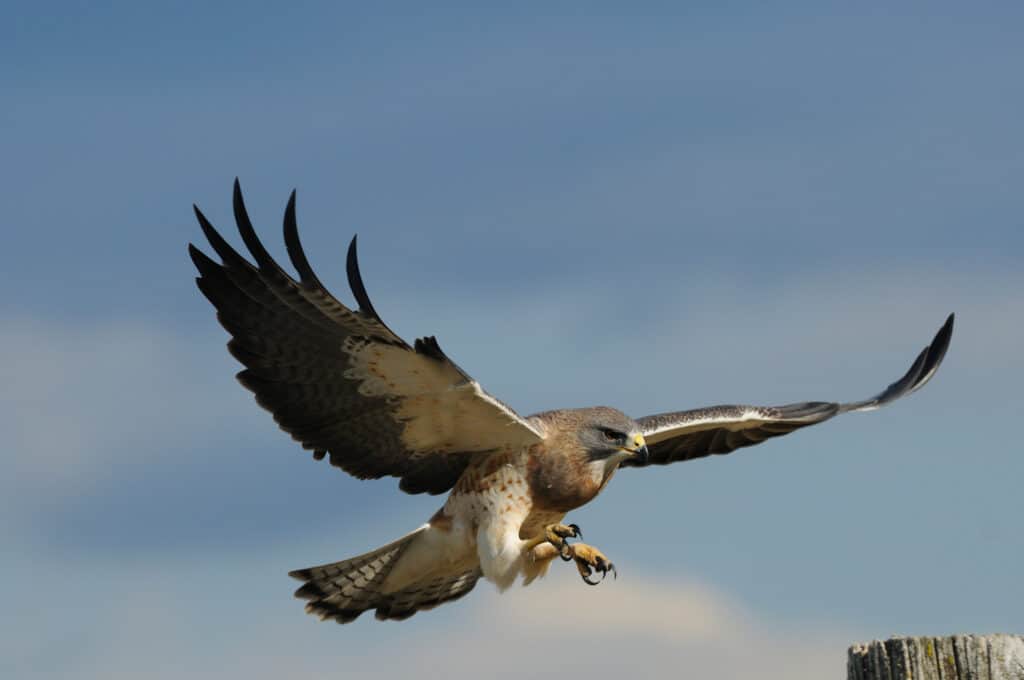
While other falcon and eagle species can fly faster, it’s no secret that hawks are impressive in flight.
©Rob McKay/Shutterstock.com
With nearly 300 different species of hawks found around the world, it’s unclear which specific type of hawk is in this particular video. However, it shares a power and speed that all hawks seem to possess, diving through the air in slow motion to catch its prey. But just how fast can a hawk fly, particularly when it is hungry?
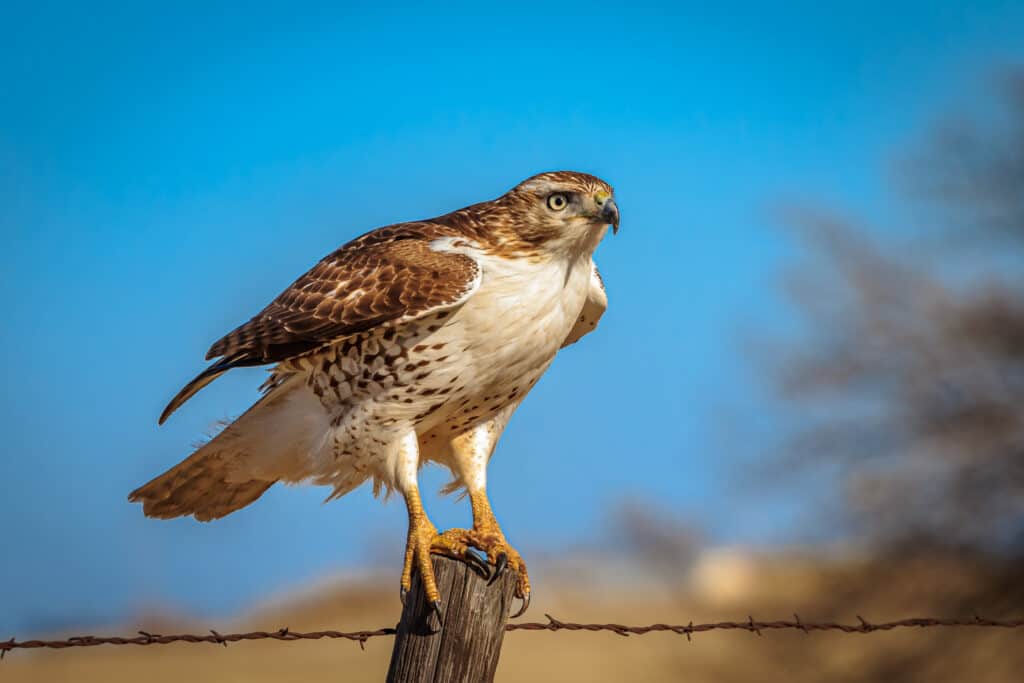
Buzzards and hawks mostly prey on live animals such as rodents and other small mammals.
©Richard G Smith/Shutterstock.com
Studies suggest that some species of hawks can reach up to 120 miles per hour. While other falcon and eagle species can fly faster than this, it’s no secret that hawks are impressive in flight. This skill is only demonstrated further in this particular video. It also shows off the agility and persistence of this particular bird of prey.
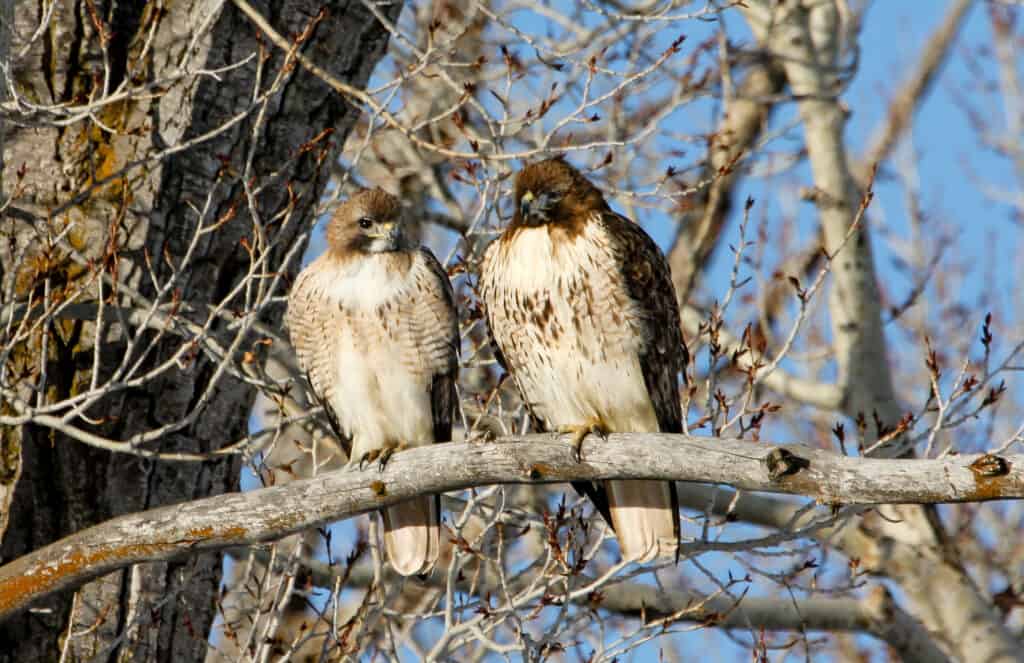
Hawks mate for life and raise chicks as a team.
©Ronnie Howard/Shutterstock.com
Fun Facts About Hawks
- Eyes like a Hawk: Hawks have excellent eyesight that’s eight times better than humans. In flight, they can spy a mouse on the ground from 100 feet in the air!
- They don’t need glasses: Birds like hawks have a third eyelid called a nicitating membrane that they can close to shield their eyes from the wind when diving to make a kill.
- That scary screech is no eagle: Hawks make a terrifying hoarse screech that lasts for two or three seconds. You’ve heard it – most movies and television commercials play a red-tailed hawk screech sound whenever a bald eagle appears on the screen. The eagle looks intimidating, but its almost cute squeal pales when compared to the piercing cry of the hawk.
- They have amazing courtship rituals: Red-tailed hawks have been known to catch prey and pass it to a female in mid-air. During courtship males and females fly in circles together and lock talons to take a spiraling dance dive toward the ground.
Sorry, Squirrel—You’re No Match For A Hawk
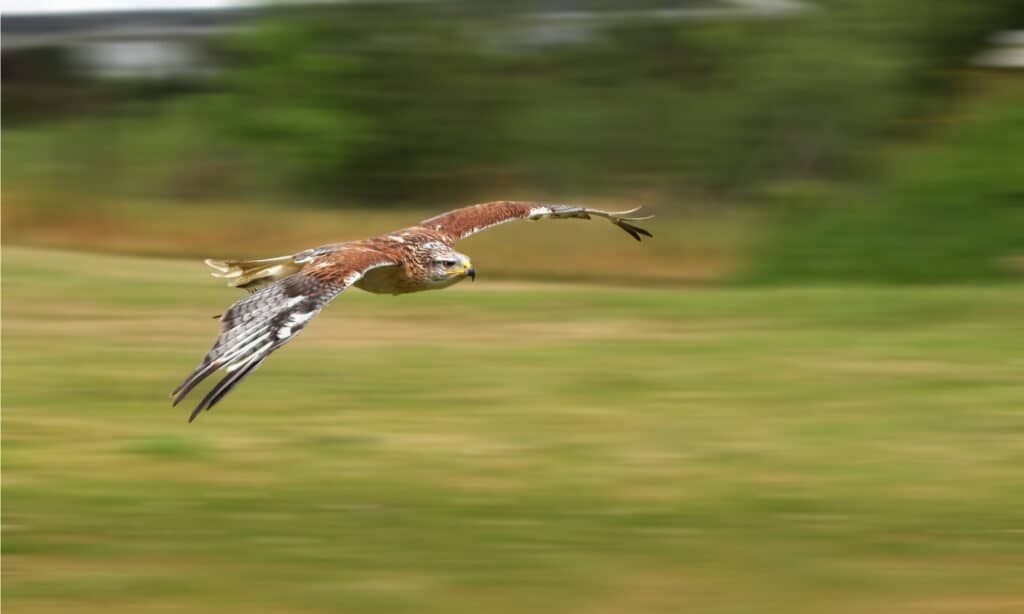
With nearly 300 different species of hawks found around the world, it’s unclear which specific type of hawk is in this particular video.
©pr2is/Shutterstock.com
Before you watch this particular video, it’s important to note that some viewer discretion is advised. While it may be a bit of a spoiler, the hawk is indeed successful in its hunt. Therefore, it could be upsetting to some viewers!
This video opens with a squirrel in a tree, about to get caught in a hawk’s talons in slow motion. However, the branches appear to get in the way of the hawk’s firm grasp, and the squirrel falls. We see the hawk continue its pursuit, close enough to just barely miss the squirrel in its sharp, fearsome talons.
As the squirrel falls from its tree, we can see the hawk’s dazzling flight path. It tumbles and cascades downward after its prey. It beats its wings and demonstrates an agility that is unmatched by most other birds.
Unfortunately, the squirrel is still no match for such a predator. The hawk manages to fly faster than gravity and ensnares its kill.
Where Do Hawks Live?
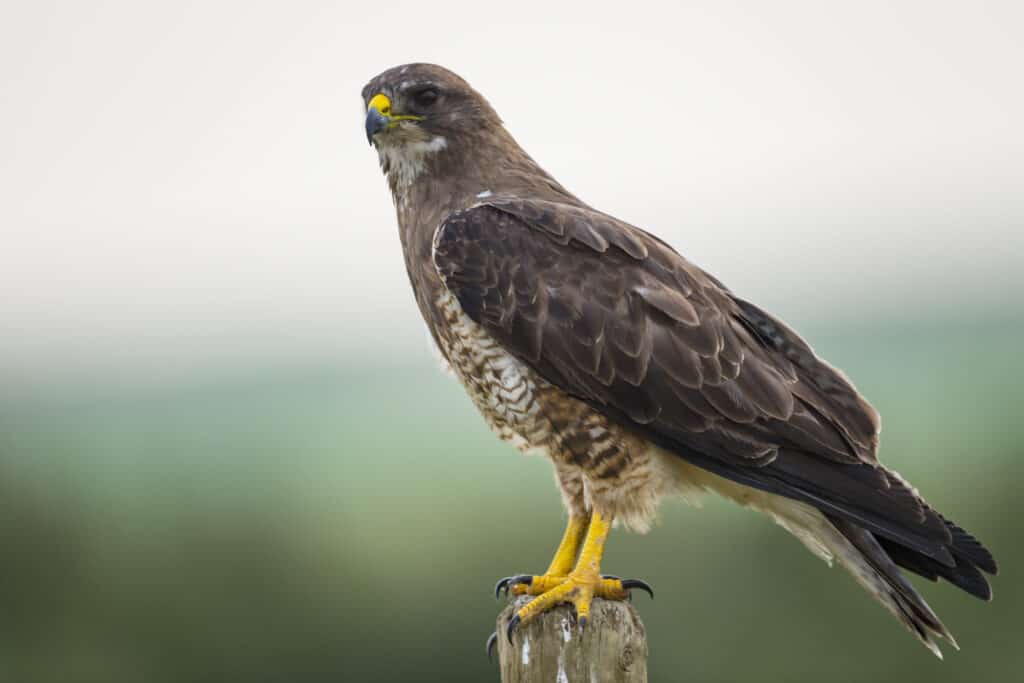
Hawks love to perch just like most species of birds, and can often be spotted on fenceposts near open fields.
©BGSmith/Shutterstock.com
While most hawks prefer a habitat with large open areas, such as fields and deserts, they may also live near mountains and even in tropical rainforests. They can even adapt to human-inhabited areas and are sometimes seen perched on telephone poles and fence posts.
How Long Do Hawks Live?
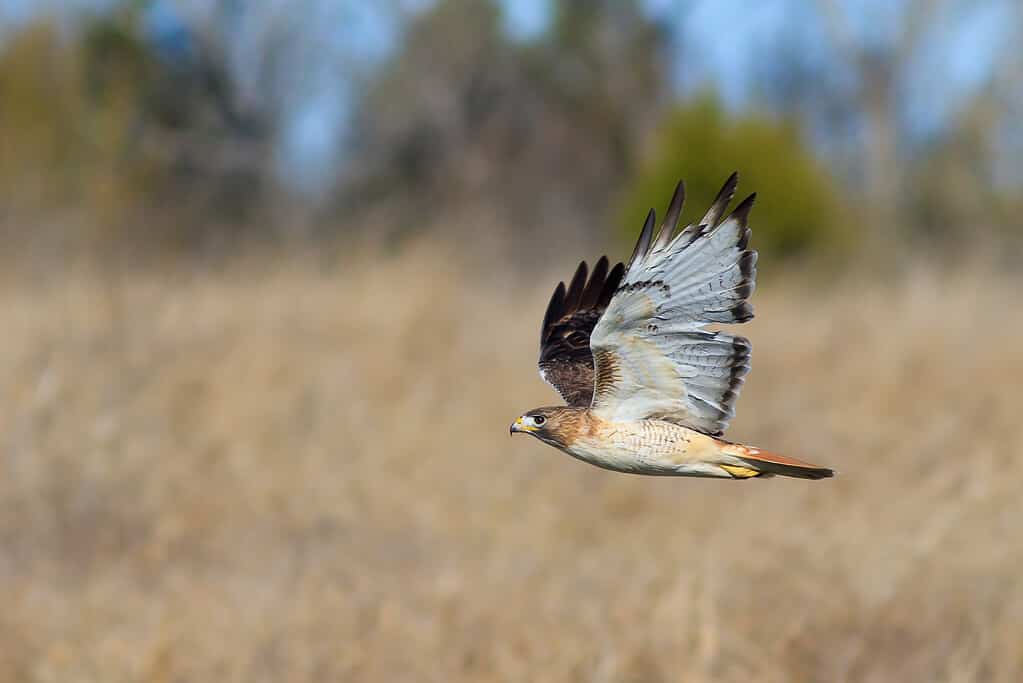
Hawks live to be about 20 years old on average.
©iStock.com/cmcneill17
In general, a hawk’s lifespan is about 20 years, as with most larger birds. The oldest known red-tailed hawk was at least 30 years old and 8 months when it was found near Michigan in 2011. Not only do hawks live long lives, but red-tailed hawks are monogamous and tend to mate for life. They are also known to reuse old nests from old mating seasons rather than rebuild nests every year.
Is It Normal For Hawks To Eat Squirrels?
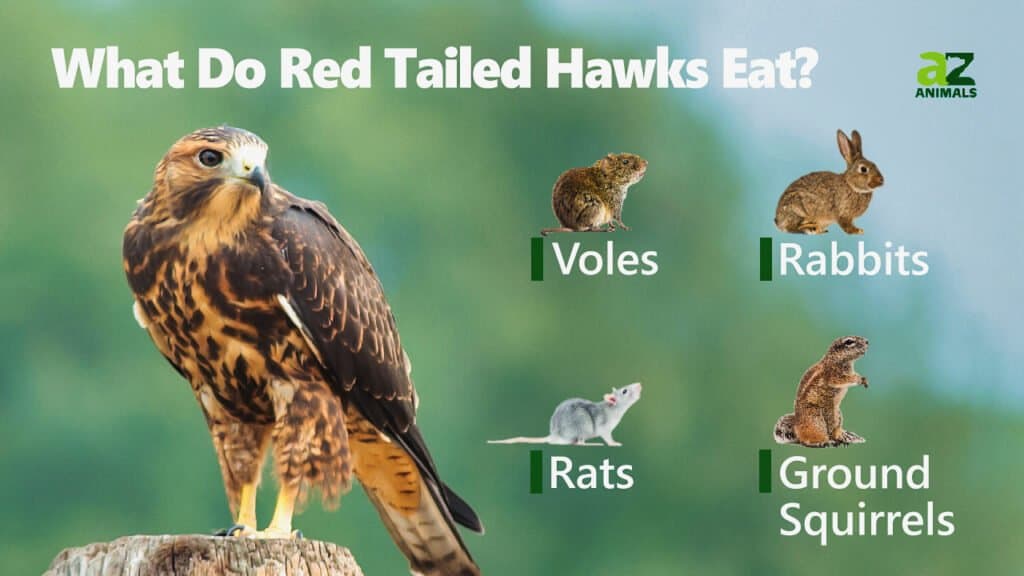
Most hawks are opportunistic feeders and feed on anything they can find. Most birds will eat small mammals such as snakes, mice, lizards, rabbits, and squirrels. They may also attack any other small creature they can find on the ground.
Once the hawk in the video got its talons into the prey – there was little chance for the squirrel to survive. Hawks have three talons facing forward and one facing backward to act like a thumb. Small animals like squirrels are usually killed immediately with one piercing of a dagger-sharp talon. These fierce birds can easily fly while carrying heavy prey – thanks to a special locking mechanism in their feet. Once they are in the powerful clutches of a hawk – animals have little to no chance of escape.
The photo featured at the top of this post is © BGSmith/Shutterstock.com
Thank you for reading! Have some feedback for us? Contact the AZ Animals editorial team.






